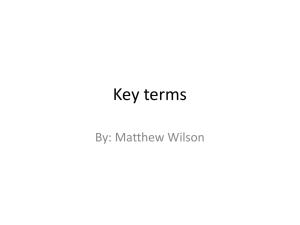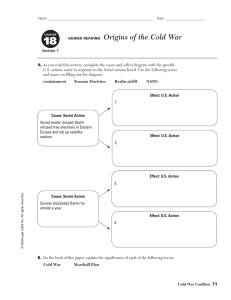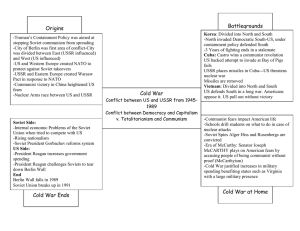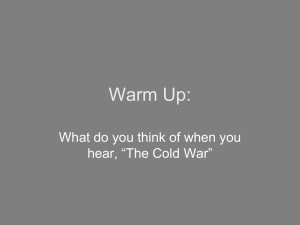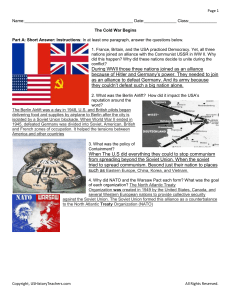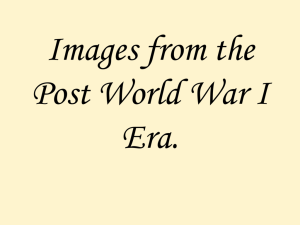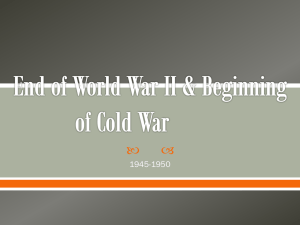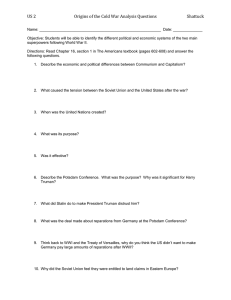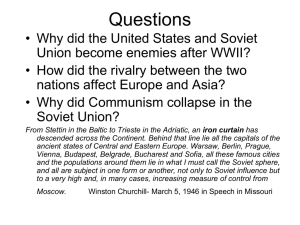STUDY GUIDE-Cold War
advertisement
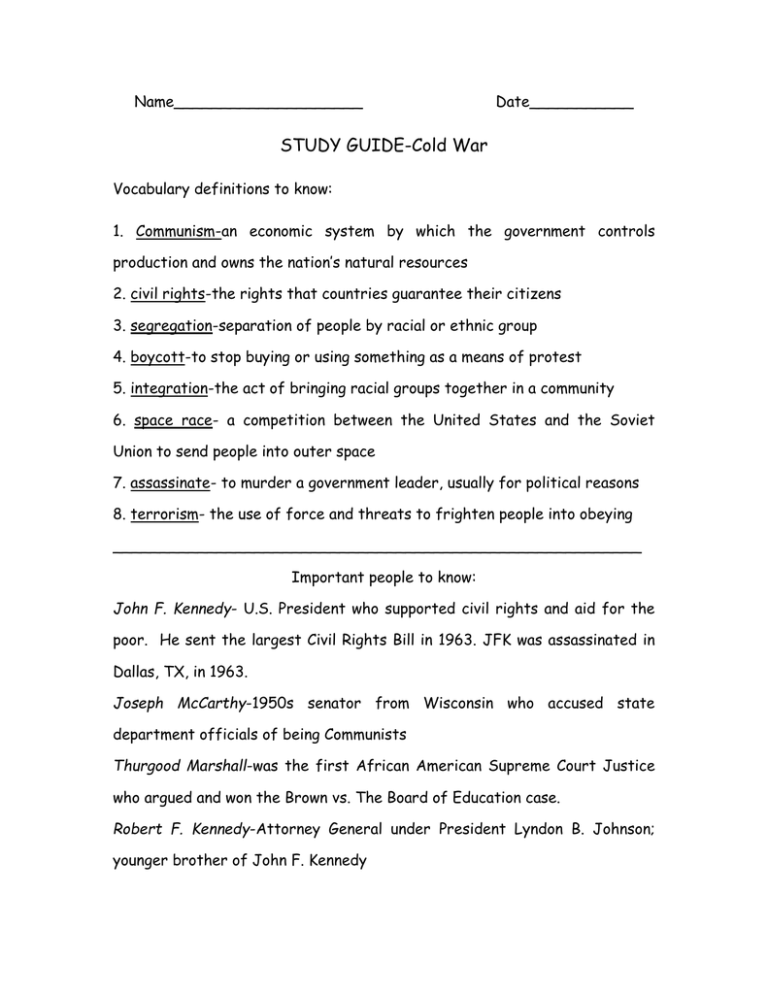
Name____________________ Date___________ STUDY GUIDE-Cold War Vocabulary definitions to know: 1. Communism-an economic system by which the government controls production and owns the nation’s natural resources 2. civil rights-the rights that countries guarantee their citizens 3. segregation-separation of people by racial or ethnic group 4. boycott-to stop buying or using something as a means of protest 5. integration-the act of bringing racial groups together in a community 6. space race- a competition between the United States and the Soviet Union to send people into outer space 7. assassinate- to murder a government leader, usually for political reasons 8. terrorism- the use of force and threats to frighten people into obeying ________________________________________________________ Important people to know: John F. Kennedy- U.S. President who supported civil rights and aid for the poor. He sent the largest Civil Rights Bill in 1963. JFK was assassinated in Dallas, TX, in 1963. Joseph McCarthy-1950s senator from Wisconsin who accused state department officials of being Communists Thurgood Marshall-was the first African American Supreme Court Justice who argued and won the Brown vs. The Board of Education case. Robert F. Kennedy-Attorney General under President Lyndon B. Johnson; younger brother of John F. Kennedy Nikita Khrushchev-leader of the Soviet Communist Party who said, “History is on our side. We will bury you.” Rosa Parks-responsible for starting the Montgomery Bus Boycott because she refused to give up her seat on a bus to a white man Martin Luther King, Jr.- leader of the Civil Rights Movement based on nonviolence _________________________________________________________ 9. What was the Cold War? The cold was a state of tension between the United States and the Soviet Union. It was called a “Cold War” because there was no fighting involved. They were fighting each other in a war of words and ideas. 10. What does the term “iron curtain” mean? Winston Churchill said that Europe was divided by an “iron curtain.” The “iron curtain” symbolized the differences between communist and noncommunist countries. (e.g. differences between USSR and the U.S.) 11. What was the Berlin Airlift? The Berlin Airlift is when the U.S. and Allied airplanes dropped food and supplies to the people of West Berlin after the USSR blocked off all the roads and railroads that led into West Berlin. 12. What was the North Atlantic Treaty Organization, or NATO? NATO was an alliance between the U.S. and other countries to stop the spread of communism. 13. What was the Cuban Missile Crisis? In 1962, the U.S. learned that the USSR had built missile launching pads in Cuba. President John F. Kennedy ordered the U.S. Navy to block any Soviet ships carrying missiles from getting into Cuba. 14. Why did the United States enter the Korean War and the Vietnam War? The United States wanted to stop the spread of communism. 15. What was the significance of the Brown vs. the Board of Education of Topeka, KS case? The Supreme Court decided that school segregation under the Constitution was illegal. 16. What was the Civil Rights Act of 1964? *prohibited discrimination based on color, race, and religion in places like restaurants, hotels, and theaters *law enforced desegregation of schools * said that people of all races, male or female, should have equal chances to get a job 17. What was the Voting Rights Act of 1965? This law made it illegal to prevent or hinder citizens from voting because of their racial or ethnic background. It banned literacy tests. 18. What achievement put the United States ahead of the Soviet Union in the space race? In 1969, Neil Armstrong and Buzz Aldrin landed on the moon.
